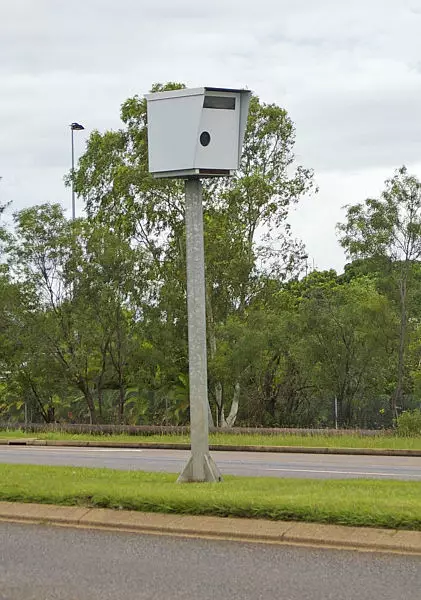As we embark on our summer holidays and venture onto the roads, it is highly likely that we will come across peculiar-looking white or yellow boxes stationed along the roadside. These mobile road safety cameras, adorned with road safety slogans and equipped with protruding cameras, serve as a means to catch motorists engaging in various unsafe behaviors such as speeding, using mobile phones while driving, or neglecting to wear seat belts. In this article, we will delve into the origins and functionality of these cameras, highlighting their vital role in enhancing road safety.
Australia faces a harrowing reality, with approximately 1,200 individuals losing their lives in car crashes each year. Moreover, the number of people suffering severe injuries has risen from 34,000 in 2011 to around 39,000 in 2019. Although changes in hospital admission reporting methods may account for part of this increase, these statistics remain deeply concerning. It is widely recognized that certain behaviors, including speeding, driving under the influence of alcohol or drugs, fatigue, distraction, and dangerous driving, significantly heighten the risk of accidents. Furthermore, failure to wear seat belts exacerbates injuries sustained in crashes. To combat the trauma inflicted on our roads due to such behaviors, it becomes crucial to increase compliance with road regulations and encourage safer driving practices. To achieve this, the deployment of safety cameras for enforcement purposes has become an integral component of the road safety response.
The Evolution of Safety Cameras
The use of safety cameras in Australia traces back to 1985 when speed cameras were initially introduced in Victoria. Since then, the utilization of safety cameras has expanded to encompass fixed red light and speed cameras, as well as mobile speed cameras that can be relocated to different locations. Additionally, point-to-point cameras, also known as average speed cameras, have come into existence. Over the past three years, mobile phone detection cameras have been implemented in New South Wales, Queensland, Victoria, and the Australian Capital Territory (ACT), with plans for their deployment in South Australia in the near future. Some trials have also taken place in Western Australia. Queensland and Tasmania currently employ these cameras for seat belt enforcement, with New South Wales intending to follow suit by 2024.
Safety cameras, whether focusing on speed or other dangerous driving behaviors, can be categorized as either fixed or mobile. Fixed cameras remain permanently stationed at specific locations and operate continuously. They are primarily utilized to target speeding and red light violations. On the other hand, mobile cameras, often seen in the form of roadside trailers, can be moved and deployed at various locations, making them a versatile tool for addressing speeding offenses. These mobile cameras can also be mounted on vehicles or tripods. Trailer-based safety cameras have the advantage of being left unattended for more extended periods and are equipped with security measures such as alarms and surveillance cameras. Additionally, they are housed in secure casings, sometimes even being bulletproof, to deter tampering and vandalism. Installation sites for these cameras are typically areas known for a history of accidents or locations of concern regarding speeding, distractions, restraint use, or general road safety.
Road safety cameras employ radar or laser technology to detect and measure vehicle speeds. Furthermore, sensors embedded in the road are utilized to identify instances of red light running. Depending on their setup, safety cameras can monitor multiple vehicles in various lanes, including those approaching from opposite directions. Equipped with high-definition cameras, these devices function effectively in diverse lighting and weather conditions, including night, fog, and heavy rain. Some advanced cameras can even identify and enforce speed limits specific to different types of vehicles, such as heavy vehicles. Moreover, the inclusion of automated number plate recognition capabilities allows these cameras to identify vehicles of interest to the police, such as stolen or unregistered vehicles. While fixed and mobile cameras enforce speed limits within their immediate vicinity, point-to-point cameras calculate the average speed of vehicles between two points, capturing images as vehicles pass camera locations at the beginning and end of the zone. Presently, point-to-point enforcement is stationary; however, the utilization of portable cameras in such systems is likely in the future.
Mobile phone detection cameras employ high-definition cameras and infrared lighting to peer through windshields, accurately determining instances of illegal mobile phone use. Additionally, these cameras possess the capability to assess seat belt usage and measure vehicle speeds. This remarkable versatility allows them to enforce compliance with various safety regulations. They can be deployed in either a fixed or mobile capacity, depending on the specific requirements and objectives.
Empirical research indicates that safety cameras indeed fulfill their intended purpose—enhancing safety. A systematic review examining the effects of different types of speed cameras demonstrates their efficacy in reducing average speeds, the prevalence of speeding vehicles, as well as the occurrence of serious injuries and fatal crashes, both of which are decreased by approximately 20%. While there is a lack of studies specifically focusing on the effectiveness of mobile phone cameras, data from New South Wales reveals a significant decline in mobile phone usage in the three years following their introduction. Additionally, enforcement data highlights the efficiency and effectiveness of these cameras in detecting violations. It is clear that relying solely on common sense, courtesy, or self-interest is insufficient in tackling the problem of reckless driving behavior. Safety cameras play a vital role and will continue to contribute to the reduction of such behaviors, ensuring safer roads for all road users.
Mobile road safety cameras serve as indispensable tools in the ongoing battle to improve road safety. With alarming numbers of fatalities and injuries resulting from dangerous driving behaviors, it is imperative to implement measures that promote compliance with traffic regulations and encourage safer conduct. Safety cameras, whether fixed or mobile, play a significant role in accomplishing this objective. As we navigate the roads this summer and encounter these cameras, let us remember their purpose and the essential role they play in creating a safer environment for all road users.


Leave a Reply